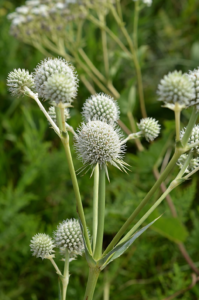By Kennedy Zittel, Naturalist
 Now that it is almost spring, I have begun to dream about all of the plants I want to add to my flowerbeds. I have only been in my house for a year or so now, so the first spring/summer I spent working on mostly indoor projects, leaving my garden areas with a lot to be desired. I did add some native shrubs, elderberry, ninebark, creeping juniper (one of my favorites), common juniper, and high-bush cranberry. This year, I want to focus on adding more pollinator friendly flowers, both to help them out but also because they look so beautiful! But which ones to pick?
Now that it is almost spring, I have begun to dream about all of the plants I want to add to my flowerbeds. I have only been in my house for a year or so now, so the first spring/summer I spent working on mostly indoor projects, leaving my garden areas with a lot to be desired. I did add some native shrubs, elderberry, ninebark, creeping juniper (one of my favorites), common juniper, and high-bush cranberry. This year, I want to focus on adding more pollinator friendly flowers, both to help them out but also because they look so beautiful! But which ones to pick?
While I still have a lot of deciding to do, one plant I know for sure I will add, because it is one of my favorites to see out here at the Dunes… and pollinators like it too!
Rattlesnake Master (Eryngium yuccifolium) is a very unique looking plant that can be found growing across most of the eastern part of the United States. This plant has a really interesting look, with large sword-like leaves that can grow up to 3 feet long! The blue-green leaves are covered in a waxy coating, have parallel-veining (most dicots have net-veined leaves), and they have spiny margins that make their leaves look like they are yucca leaves (hence the latin name).
However, this plant is not a member of the yucca family, or the thistle family like some people may think given it’s flower shape. It is actually a member of the carrot family! If you crush a leaf the smell will give that away.
Rattlesnake master has really neat looking flowerheads, they look like spiky golfballs! One flower stalk usually has around 10 flowerheads, with each flowerhead having around 106 individual flowers… meaning that just one plant can have over 1,060 individual flowers! Flowering mid-late summer, their greenish-white flowers are a favorite to a lot of different pollinator species. Monarchs, skippers, soldier beetles, etc. all enjoy visiting this plant. Though pollinators love it, deer and rabbits don’t!
One place that this plant can be seen here at the Dunes is along Willow Trail in the Steffen Prairie over by Todd’s Pond. I love walking along Willow Trail and looking for the white golfball shaped flowers standing out amongst the other flowers growing out there later in the summer, because there are usually a ton of pollinators near the plant!
Now, what’s up with that name? Well, early settlers named it that after believing that Native Americans used the plant for an antidote for rattlesnake venom. Which is not true. This plant was used medicinally, but not for that. The leaves of this plant were also used for weaving purposes, like making sandals and baskets.
This plant prefers sandy soils and sunny conditions, something to bear in mind if you would like to plant it in your garden too. If not, come on out mid-late summer and try to spot some of them growing naturally in our prairie areas!
